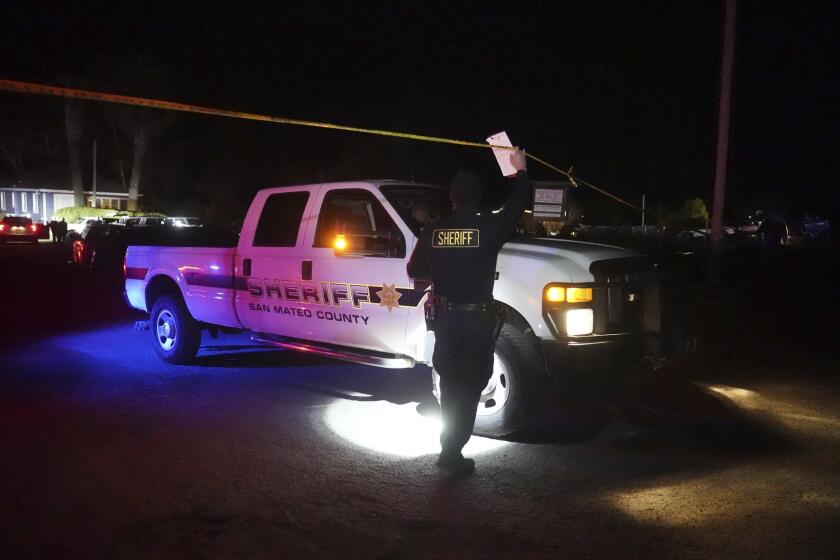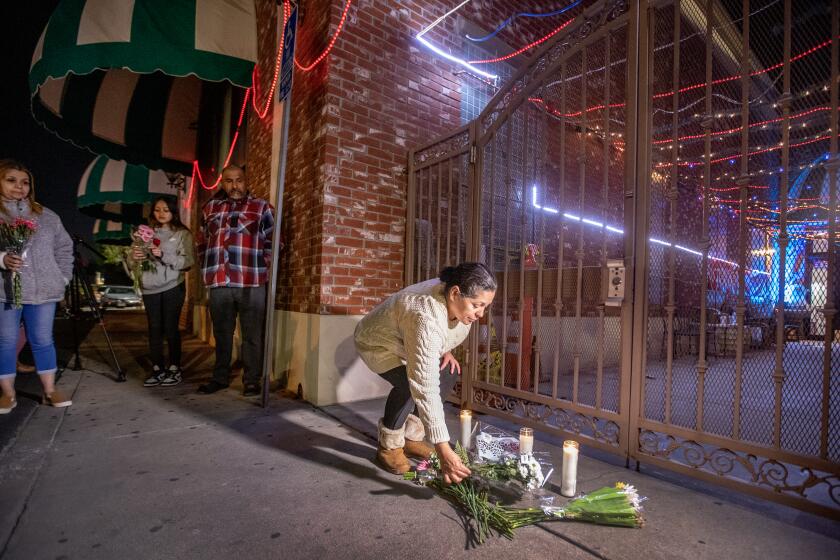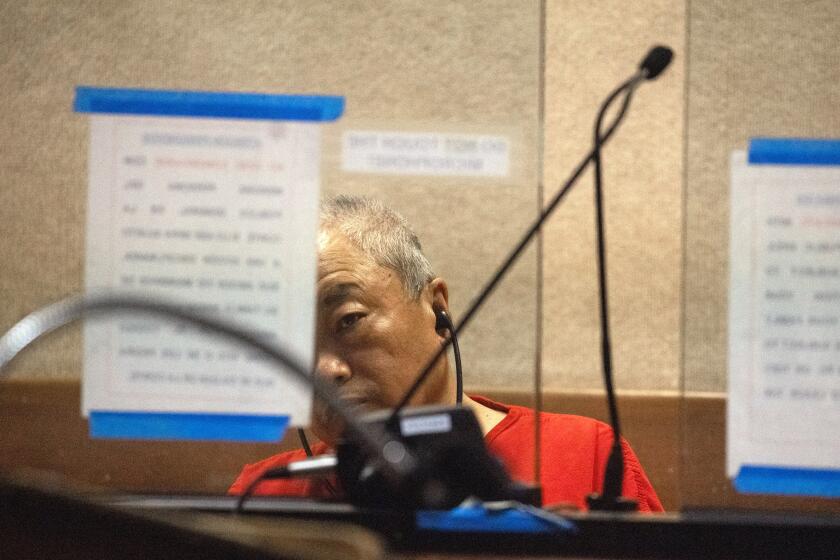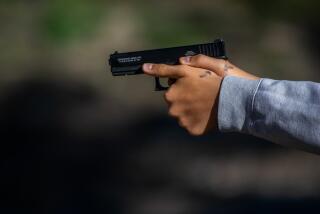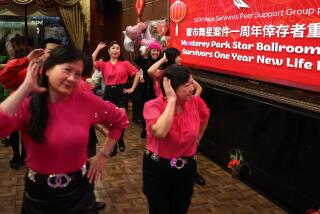Op-Ed: Older mass shooters are rare. Here’s how they differ from young assailants
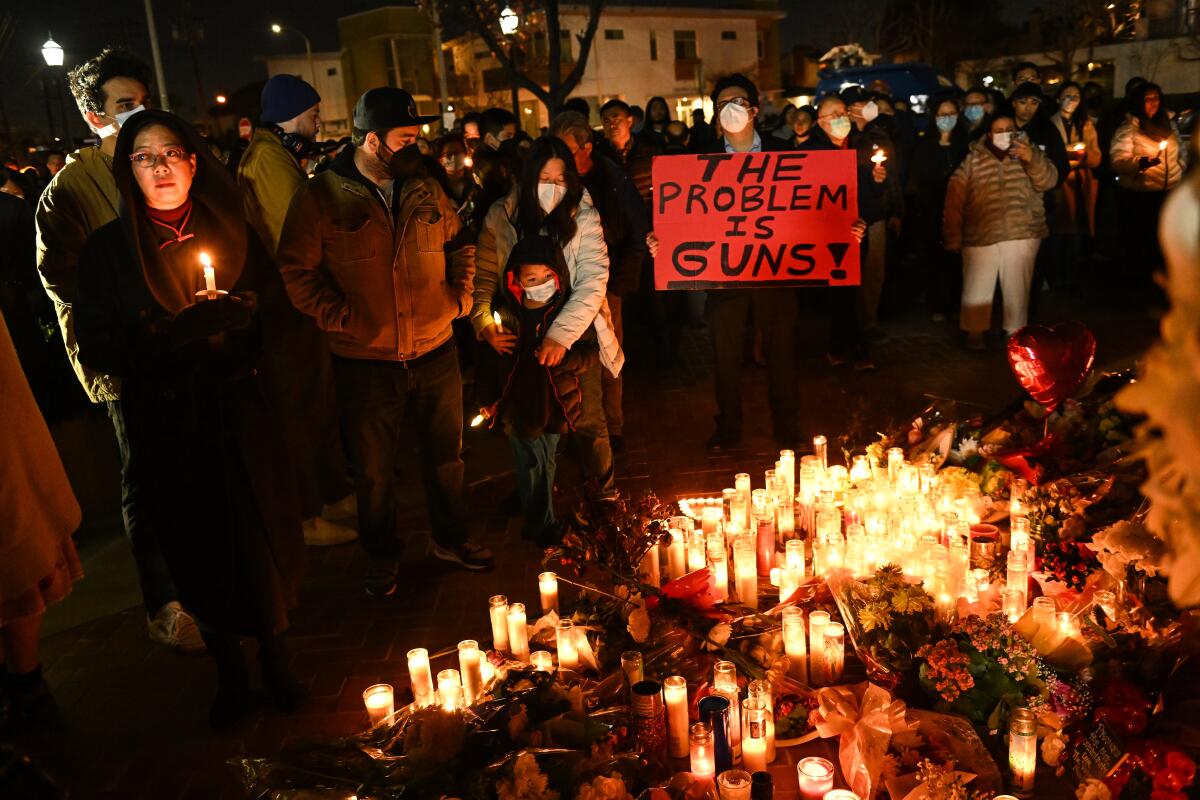
- Share via
The killing of 18 people in California just two days apart — 11 in Monterey Park and seven near Half Moon Bay — are the latest horrors in America’s long history of gun violence. But there is a factor in these mass shootings, and with the suspects, that stands out.
The median age of mass shooters in the United States is 32. Yet the man who shot dead 11 people in Monterey Park on Saturday before turning the gun on himself was 72 years old — the oldest mass shooter in modern American history, our records show. Meanwhile, the man who is alleged to have killed seven near Half Moon Bay on Monday was also older than most — 66, the third-oldest in history.
As criminologists, we have built a database of 191 mass shooters using public data. The shooters in our records date to 1966 and are coded on nearly 200 variables, including age at the time of attack. Our research shows that mass shootings — defined here as events in which four or more people are killed in a public place with no underlying criminal activity — have become more frequent, and deadly, over time.
Suicides tend to occur in clusters that suggest contagion, but there is little evidence that murders or mass shootings follow the same pattern, experts say.
Before these latest attacks, mass shooters were also getting younger overall. From 1980 to 1989, the median age of mass shooters was 39. Over the next two decades, it was 33. And from 2010 to 2019, it was 29.
Since 2020, the median age of mass shooters has come down to just 22 years old — mostly young men and boys who carried out their attacks amid the disruption of a global pandemic.
Ages vary by shooting location, the data show. Though mass shooters at offices, warehouses and houses of worship skew older, shooters at K-12 schools, colleges and universities tend to be younger — in large part because many school shooters tend to be current or former students.
Search warrants at the home of Huu Can Tran uncovered weapons, ammunition and items that led officials to suspect he was manufacturing firearm suppressors.
Before the killings in Monterey Park and Half Moon Bay, just six mass shooters in our database were over the age of 60. The oldest was a 70-year-old who killed five people at an auto parts store in Kentucky in 1981. The list also includes the perpetrator of the deadliest mass shooting in U.S. history — a 64-year-old who killed 60 people at a 2017 music festival in Las Vegas.
The others were a 66-year-old who killed four people in 2001 at a manufacturing plant in Illinois where he used to work; a 64-year-old who killed four people in rural New York in 2013; a 62-year-old who killed four in 1997 in New Hampshire, including two state troopers and a judge; and a 60-year-old who killed six at a shopping center in Palm Bay, Fla., in 1987.
Nearly all of the over-60 perpetrators of mass shootings, before this week, were white men — just one was a nonwhite male. Both suspects in the Monterey Park and Half Moon Bay attacks were Asian.
Chunli Zhao, suspected of fatally shooting seven people in Half Moon Bay, has been charged with seven counts of murder, prosecutors said Wednesday.
Mass shooters over 60 also tend to have prior criminal records and to target their place of employment, or retail and outdoor locations in communities they know well. This explains in part why the victims in the most recent shootings are older than in other mass shootings — when shooters target people they know, those people tend to be a similar age.
What separates the older mass shooters from those in their 20s and 30s is that the younger shooters typically study previous mass shooters for inspiration and validation. Younger shooters also tend to communicate intent to do harm in advance. This leaking of details of the attack is often seen as a final cry for help. Younger shooters also tend to leave behind manifestos to communicate their anger and grievances to the world, the data show. Analysis of their expressed motives suggest they are seeking fame and notoriety for their actions.
None of the shooters aged 60 and above in our database did that. Instead, they tend to have experienced a recent stressor, such as a family conflict or debt. They are more likely to be motivated by legal, financial and interpersonal conflicts, rather than fame-seeking.
But all perpetrators of mass shootings, young and old, have some things in common. Their mass shooting is intended to be their final act, whether they die by suicide, are killed on scene, or sit and wait to be arrested like the Half Moon Bay suspect did. And, of course, they all have access to the firearms they need to commit these devastating acts.
James Densley is a professor of criminal justice at Metro State University. Jillian Peterson is a professor of criminology at Hamline University. They run the Violence Project and are the authors of “The Violence Project: How to Stop a Mass Shooting Epidemic.” This article was produced in partnership with the Conversation.
More to Read
A cure for the common opinion
Get thought-provoking perspectives with our weekly newsletter.
You may occasionally receive promotional content from the Los Angeles Times.
